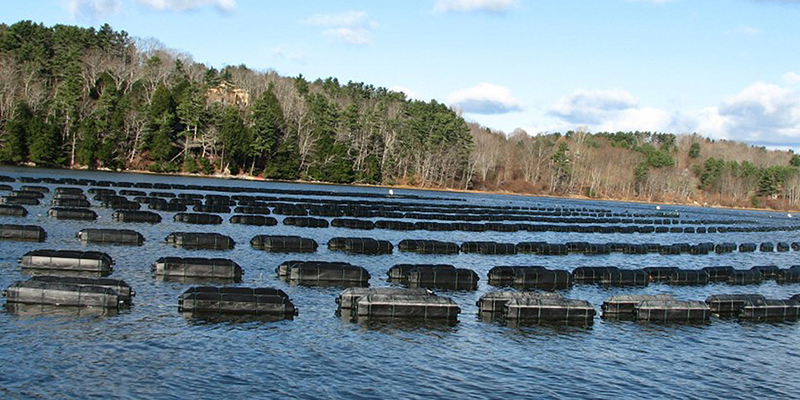Maine’s cold-water oysters are a hot item on the regional shellfish market, and market research shows the industry will be able to continue expanding well into the future.
Demand for oysters is expected to continue its rise, outpacing the state’s supply through 2026, according to a report delivered to the Gulf of Maine Research Institute’s Aquaculture Program by an outside consulting firm.
“There has been a lot of investment going into Maine’s oyster farms recently, both in existing operations and new leases,” said Sebastian Belle, executive director of the Maine Aquaculture Association. “And these new leases are typically being tended by either members of working waterfront families or commercial fishermen themselves, either shifting out of another fishery or looking to diversify their income.”
Oyster farming has become a popular option for fishermen nearing retirement age who have the boat skills and knowledge to be successful but are looking to move away from the physical tolls of fishing.
For decades Maine’s oyster operations were focused on the Damariscotta River, but they’ve spread out in recent years. Oyster operations can now be found anywhere along the coast from the Canadian to New Hampshire borders. With a growing variance in farm locations comes a diversity in taste, a boon for increasing markets.
Maine is in the process of approving a minimum harvest size for American oysters — 2.5 inches with a 10 percent tolerance — in order to increase the average quality on the market.
According to Belle, the majority of oysters are still sold in-state, but sales are slowly shifting to other regions.
“Maine is seen as having the premier half-shell oyster,” he said. “With water temperatures significantly lower than other growing regions, our oysters are plump and sweet.”
Coming from colder waters, the state’s oysters have a longer shelf life than other product from other places, said Belle, with the ability to 24-hour ship as far as Chicago and Atlanta.
The industry is paying close attention to warmer ocean temperatures that have started to affect fisheries throughout the Gulf of Maine though, with some farms working to change their production methods to get ahead of the trend.







